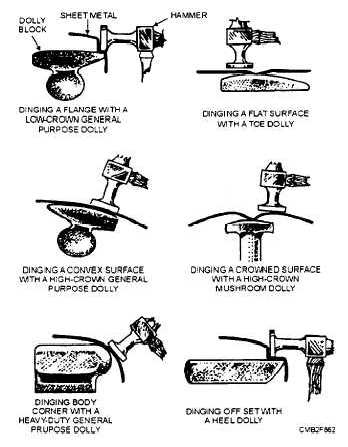
Figure 8-62. - Dolly blocks used to shape body panels.
NOTE
Make sure the surfaces of the spoons, hammers, and dollies are free from scratches and/or dents. Surface defects on these tools will cause similar defects in the sheet metal they are used on. To remove surface defect on these tools, use a file and fine grit sandpaper until you have a smooth surface.
With these tools and experience you will be able to remove the dents and creases while restoring the body to a like-new condition. The ease and speed with which you can straighten the sheet metal is dependent on starting the repair work at the right point and the correct use of the tools. If this is done, the amount of "dinging" (light tapping of the metal with a hammer) required to remove the dent is reduced considerably. As metal is dinging and formed, a certain amount of stretching occurs. This causes additional work when nearing completion of the repair. Always remember, when straightening a damaged panel, the damage should be removed in reverse order of how it occurred.
REMOVING DENTS
Before attempting any body repairs, scrape off any undercoating or foreign matter located in the area to be repaired. Dirt or undercoating will cake on the dolly block. No amount of hammering will produce a smooth surface when this occurs. Next make sure the outer side is clean to protect the hammer.
Without prior body repairing experience, a mechanic will usually start applying pressure at the spot where the panel was struck first and is depressed the most. The CORRECT METHOD is to apply pressure at the ridge farthest from the point of impact. To make the procedure clear, refer to the damaged panel in figure 8-63.
Assume that the original form of the panel is shown as the dotted line. Point Y is where it was struck, and X is a ridge that was formed last. With the use of a spoon and hammer or mallet, place the spoon on the ridge (X) and strike it with the hammer. Aim your hammer blows directly at the ridge (X). By following the ridge with the spoon and hammer, you will find that the ridge will gradually disappear while the major portion of the depression at point Y will spring back and very closely resemble the original contour of the panel.
Using a dolly block with the same general curvature as the panel, place it under the panel at point O and strike the dent as shown. In this way, the dolly block acts as a hammer and raises the dented portion to the original contour, as the dolly block is gradually moved toward point Z. The most common mistake made by an inexperienced body repairman is trying to do all the work with one blow of the dolly. All that is necessary of the hammer or dolly is to press the metal back into position. A number of light blows with the hammer or dolly is better than a few heavy ones. Heavy blows result in the metal stretching excessively during the straightening process. This requires that the panel be shrunk later to remove bulges.
When working with the hammer, apply blows rapidly with a pulling action so the hammer tends to slide as it contacts the metal. Above all, don't try to rush the job by striking the metal too heavily. Figures 8-64 and 8-65 show the procedures for removing dents when performing bodywork. Use of a flat-faced hammer should be confined to the flat or nearly flat surfaces and the outside of curved surfaces. Hammers with crowned faces are for use on concave surfaces only.
Continue Reading